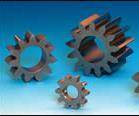Mold Components
Standardized Mold Base Reduces Mold Build Time, Costs
A patented standard mold base—the Lightning Base—uses one common base with interchangeable inserts for various parts.
Read MoreCost and Control Benefits of Permanent Product Traceability
Measuring the value of the right date code insert through your requirements, and its reliability and readability.
Read MoreDefining the Standard Mold Base
When buying a standard mold base there should be expectations regarding quality, price and delivery.
Read MoreReducing or Maintaining Cycle Times with Mold Coating
No matter the size of a tool, taking into consideration your GPM within your tooling’s cooling systems and using electroless nickel coating is an effective way to improve or maintain desired cycle times.
Read MoreHigh Cavitation Molds Promote Economies of Scale
Toolmakers are developing increasingly complex molds for high production of thinwall parts.
Read MoreDon’t Build the “Same Old Same Mold”
Steps for evaluating the latest mold innovations in order to move along the evolution process.
Read MoreCemented Tungsten Carbide Offers Wear and Corrosion Resistance for Tooling
Using cemented tungsten carbide as a tooling material for core pins—especially in areas of high wear—can significantly reduce downtime.
Read MoreEvaporative Cooling Approach To Mold Temperature Control
This new mold temperature control technology allows tool designers to create mold designs engineered to a level previously unattainable.
Read MoreHow to Make “Quick-Turn” Your Shop’s Mantra
On top of increasing production capacity, quick delivery standards save as much as five hours per project for a manufacturer of quality “quick-turn” tooling.
Read MoreAutomation and Moldmaking: Mold Production in Action
Moldmakers are starting to change the way they think and incorporate automation into all aspects of their operation—combining a multitude of processes in a single cell for optimal productivity.
Read More









